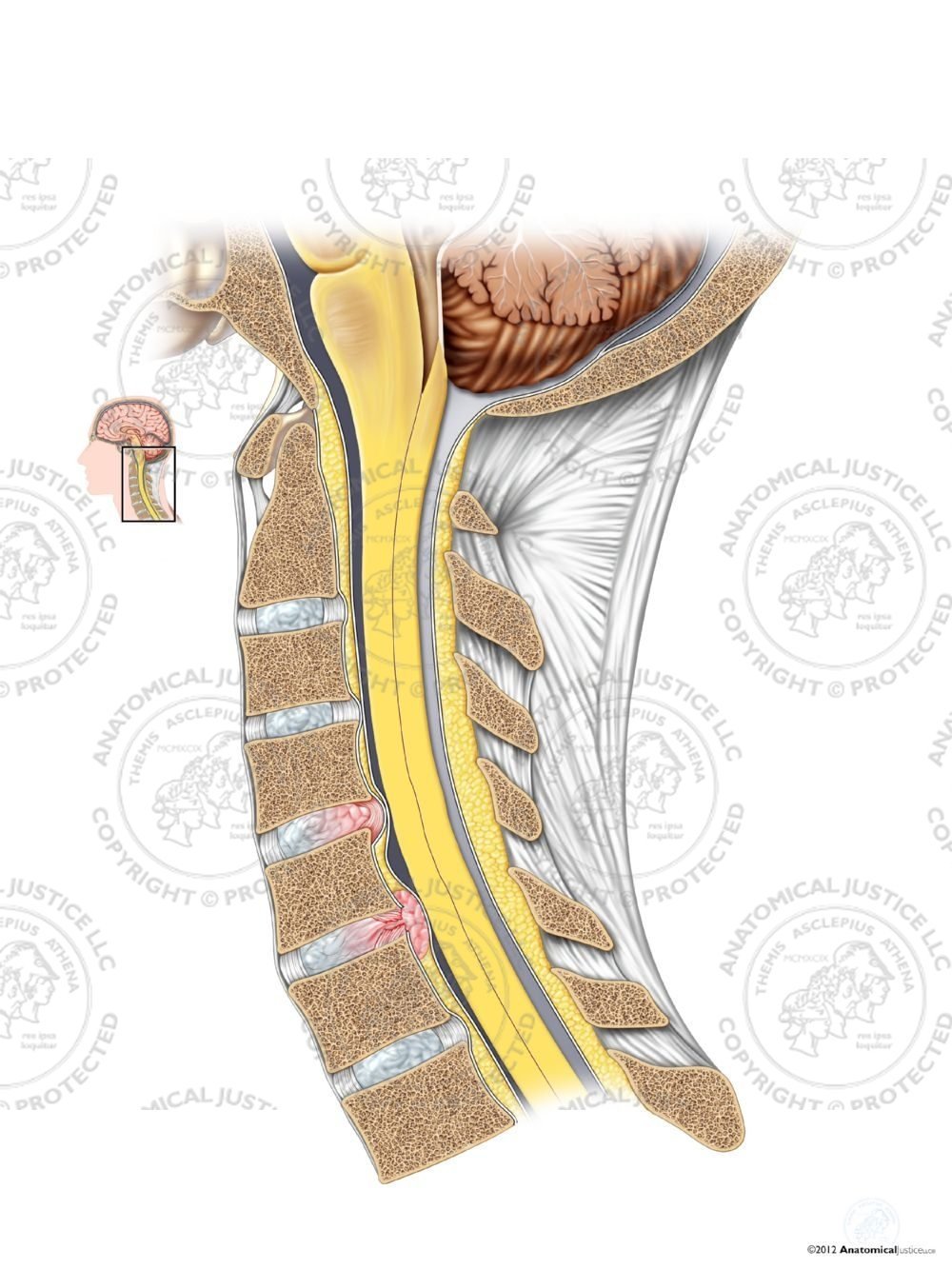Ever felt a sharp pain shoot down your back, or a nagging ache that just won’t quit? You’re not alone. Millions of people experience back pain, and a common culprit is a broad-based disc bulge. It sounds scary, but understanding what it is can help you navigate this common spinal issue with confidence.

Image: www.ehealthstar.com
Imagine your spine as a flexible column, made up of individual bones called vertebrae. Between these vertebrae, like cushions, sit soft, jelly-like discs. These discs provide shock absorption, allowing our bodies to move with grace and resilience. However, just like any cushion, these discs can wear out over time, leading to a disc bulge. But what exactly is a broad-based disc bulge, and how does it differ from other types of disc issues?
Unveiling the Mystery of Broad-Based Disc Bulges
A broad-based disc bulge, as the name suggests, is a condition where the soft, inner portion of the disc, called the nucleus pulposus, pushes out beyond the tough outer layer, the annulus fibrosus. It’s like a jelly-filled donut where the jelly has started spilling out from the side. This bulge can occur in any part of the spine, from the neck (cervical spine) to the lower back (lumbar spine), but is most common in the lumbar region.
The term “broad-based” signifies that the bulge spans a significant portion of the disc, unlike a more localized or focal bulge. This broadness can sometimes compress nearby nerves, leading to pain, numbness, tingling, or weakness in the area the nerve supplies.
What Causes a Broad-Based Disc Bulge?
While some people are genetically predisposed to disc degeneration, several factors can contribute to the development of a broad-based disc bulge, including:
- Age: As we age, the discs naturally lose their water content, becoming less flexible and more prone to degeneration.
- Lifestyle: Activities that put repetitive stress on the spine, such as heavy lifting, awkward postures, and prolonged sitting, can accelerate disc wear and tear.
- Weight: Excess weight puts increased pressure on the spine, contributing to disc bulge formation.
- Trauma: Injuries like car accidents or falls can cause sudden and significant damage to the discs.
The Symptoms You Should Know
Not everyone with a disc bulge experiences symptoms. However, when symptoms do occur, they can range from mild to severe and include:
- Back pain: This can be localized to the affected area or radiate down the leg (sciatica).
- Neck pain: Similar to back pain, neck pain can radiate to the arms or shoulders.
- Numbness or tingling: This sensation can affect the arms, legs, or even the hands and feet.
- Weakness: Muscle weakness in the affected limbs is a potential sign of nerve compression.
It’s important to note that these symptoms can also be indicative of other conditions, so consulting a healthcare professional is crucial for accurate diagnosis.

Image: anatomicaljustice.com
Seeking Expert Guidance: Diagnosis and Treatment Options
If you’re experiencing any back or neck pain, numbness, or weakness, it’s essential to schedule an appointment with a healthcare provider. The diagnosis of a broad-based disc bulge typically starts with a physical examination, followed by imaging tests like MRI, which provide detailed pictures of the spine.
Treatment for a broad-based disc bulge depends on the severity of symptoms and the underlying cause. Here are some common approaches:
- Non-surgical treatment: This usually involves conservative measures like pain relievers, anti-inflammatory medications, muscle relaxants, physical therapy, and exercise.
- Epidural steroid injections: These injections can effectively reduce pain and inflammation by delivering medication directly to the affected area.
- Surgery: In rarer cases, surgery might be recommended if non-surgical treatments fail to provide relief or if there is significant nerve compression.
Empowering You: Steps to Prevent and Manage Disc Bulges
Preventing and managing broad-based disc bulges is an ongoing journey, but it’s worth the effort for a healthier spine. Here are some key steps:
- Practice good posture: Avoid slouching and maintain a neutral spine alignment, both when sitting and standing.
- Stay active: Regular exercise helps strengthen muscles that support the spine and improves flexibility.
- Maintain a healthy weight: Losing even a small amount of weight can significantly reduce stress on the spine.
- Ergonomics: Make sure your workplace is ergonomically designed to minimize strain on your back.
Remember, even if you have a broad-based disc bulge, there are ways to manage it and live a healthy, active life. It may be helpful to work with a physical therapist or other qualified professional to develop a personalized exercise program that addresses your specific needs.
What Is A Broad Based Disc Bulge
Final Thoughts: Embracing a Healthier Future
A broad-based disc bulge doesn’t have to be a life-altering condition. Understanding the cause, symptoms, and treatment options empowers you to take control of your health and seek the appropriate care. If you suspect you may have a disc bulge, don’t hesitate to consult a healthcare professional. By educating ourselves and making proactive choices, we can work towards a future where back pain is a lesser concern, allowing us to move freely and enjoy life to its fullest.



/GettyImages-173599369-58ad68f83df78c345b829dfc.jpg?w=740&resize=740,414&ssl=1)


